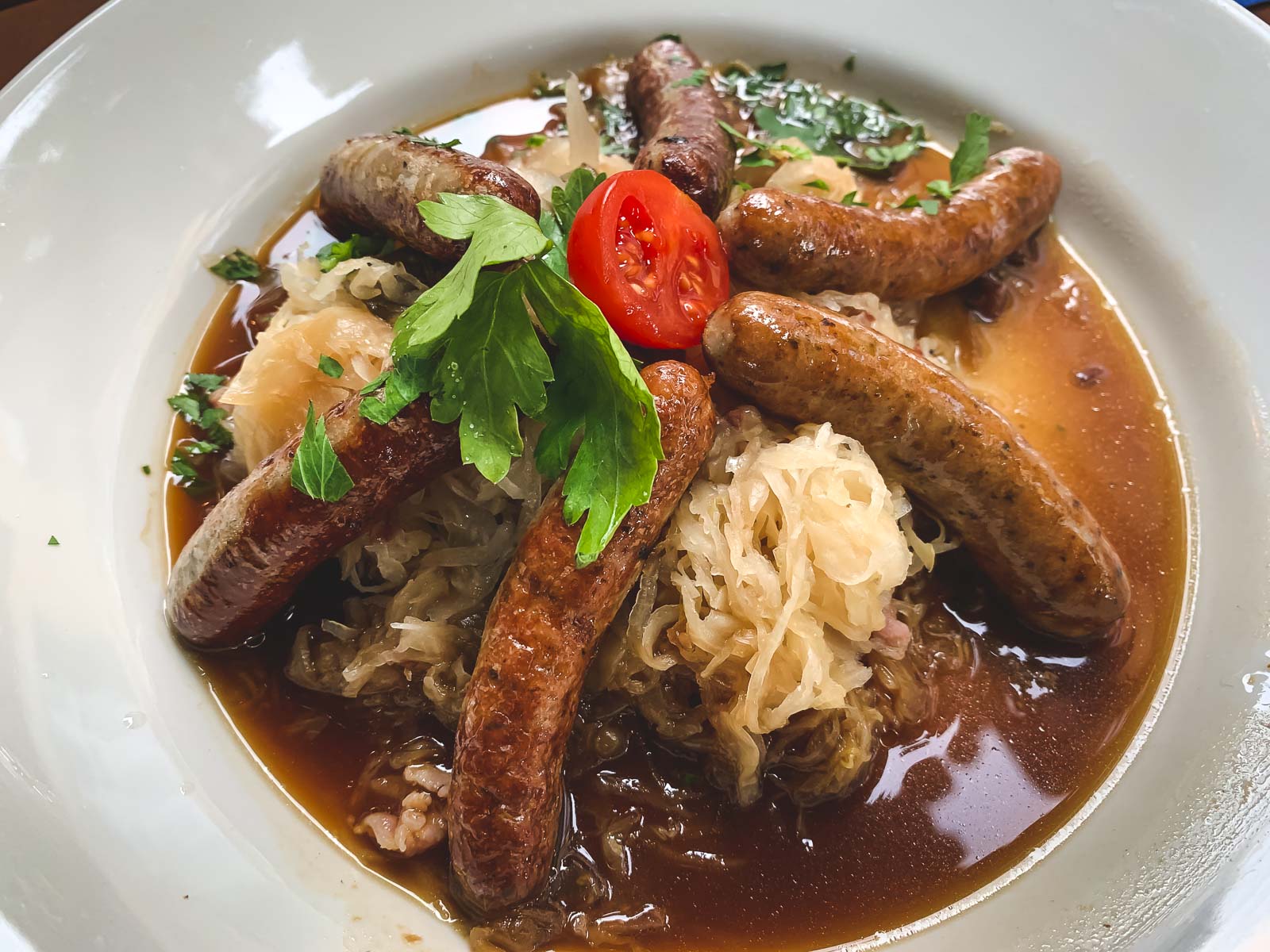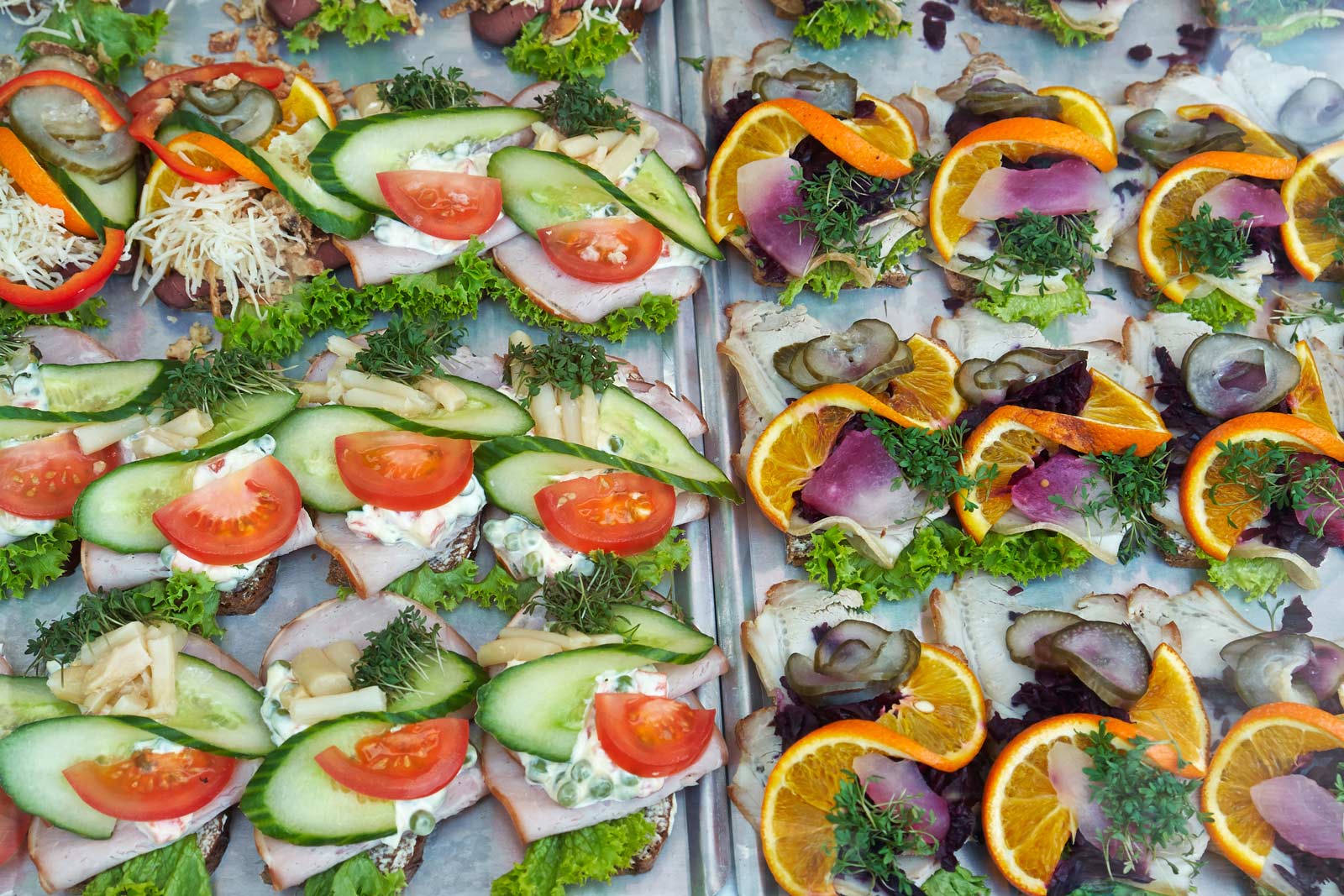Summary
- Kerak Telor – Jakarta’s “Official” Street Snack
- Nasi Uduk – An Indonesian Take on Coconut Rice
- Soto Tangkar – A Humble Soup with a Royal Origin
- Gado-gado – Salad Takes to the Streets
- Ketoprak – A Street Snack that Hits the Spot
- Nasi Gila – Go Nuts Over Jakarta’s “Crazy Rice”
- Bakso – Meatball Soup Fit for a President
- Nasi Manado – Five-Alarm Rice For the Chili-Loving Eater
- Pisang Roa – An Odd Coupling of Bananas and Chili
- Ayam Goreng – This Ain’t the Colonel’s Fried Chicken
- Bakmi – A Chinese Noodle Dish Beloved by Indonesians
- Saté Ayam – Chicken Skewers Indonesian-Style
With Indonesia’s long history as a land of spices, the local food—inclusive of the inexpensive yet hearty offerings available on the streets—merges local ingredients with traditional cooking techniques, producing delicious and exciting dishes. Indonesia’s legacy as a battleground for various colonial powers intertwines with its spice heritage cultivated across numerous islands.
K.F. Seetoh, a noted TV host and founder of the Asian food company Makansutra, elaborates on the historical significance, noting, “A bloody war was fought on spices in the archipelago almost half a millennium ago.” He emphasizes the compelling allure of these spices which had the power to incite conflict.
Today, visitors can savor their favorite street foods in tranquility. In bustling cities like Jakarta or Yogyakarta, finding these delightful street foods is rather simple, as many of them hold popularity across Indonesia, complemented by local specialties.
1. Kerak Telor – Jakarta’s “Official” Street Snack
:max_bytes(150000):strip_icc():format(webp)/streetfood_02_keraktelor-56a40c043df78cf772808dbe.jpg)
Indonesia’s diverse population of 230 million is split among over 300 ethnic groups, with the Betawi group representing Jakarta. This culture plays a crucial role in shaping Jakarta’s street food, presenting dishes like nasi uduk and distinctive versions of soto and gado-gado.
Kerak telor, which translates to “egg crust,” stands out as the signature Betawi street food. This unique dish is a sticky rice frittata, prepared over charcoal by vendors who layer sticky rice with fried shallots, shrimp, grated coconut, pepper, and salt. This mixture is combined with either a duck or chicken egg before being served hot on paper. The result is a delicious, crispy snack.
When it comes to egg choice, the duck variant offers a richer flavor and texture, though it typically comes at a higher price. While it bears some similarity to an omelet, the inclusion of these ingredients, combined with Indonesian spices, creates a completely different experience from mundane Western styles.
However, kerak telor isn’t found everywhere; vendors prefer iconic locales in Jakarta like Monas, Old Town, and Setu Babakan.
2. Nasi Uduk – An Indonesian Take on Coconut Rice
This coconut-infused rice resembles the Malaysian nasi lemak but is distinctly tweaked by the Betawi cuisine. Instead of using water, the Betawi infuse the rice with coconut milk, incorporating lemongrass, clove, and various spices, resulting in a creamy, savory dish that harmonizes splendidly with tempeh, nasi ayam, or anchovies.
3. Soto Tangkar – A Humble Soup with a Royal Origin
The term “soto” represents a variety of Indonesian soups that culminate in diverse regional interpretations. Soto tangkar, a Betawi specialty, features beef ribs and brisket simmered in coconut milk with garlic, chili, candlenut, and other spices. Often, it is served alongside saté daging sapi (beef satay), allowing diners to use the soup as a spicy dip for the skewers.
Soto’s noble beginnings provide an interesting narrative concerning its prevalence in street culture. According to Fried Chillies, the name derives from the Malay word for “royal,” reflecting an interesting history tied to royalty.
4. Gado-gado – Salad Takes to the Streets
:max_bytes(150000):strip_icc():format(webp)/streetfood_04_gado-gado-56a40c055f9b58b7d0d52196.jpg)
Vegetarians can rejoice, as they can still experience Indonesian street food through the renowned salad, gado-gado. The term translates to “mix-mix,” indicating its composition of both blanched and fresh vegetables, tofu, and tempeh, all drizzled with a flavorful peanut sauce. It may be garnished with slices of hard-boiled egg and sautéed onions, served alongside deep-fried, starchy crackers known as kripik.
Moreover, gado-gado has successfully made its way into restaurants across the region, being a popular staple at various dining establishments.
5. Ketoprak – A Street Snack that Hits the Spot
This meat-free option, ketoprak, shares its similarity with gado-gado due to its peanut sauce dressing. However, ketoprak features rice noodles and lontong (compressed rice), all accompanied by bean sprouts, chili, garlic, tofu, shallots, and kripik, with some stalls even offering hard-boiled eggs and cucumber slices.
Traditionally stemming from Cirebon, West Java, ketoprak is now recognized as a Betawi staple, although available in Yogyakarta as well. When ordering, you can specify the spice level based on preference.
6. Nasi Gila – Go Nuts Over Jakarta’s “Crazy Rice”
:max_bytes(150000):strip_icc():format(webp)/streetfood_05_nasi-gila-56a40c055f9b58b7d0d52199.jpg)
The name “nasi gila” translates to “crazy rice,” aptly reflecting its chaotic mix of sausage, chicken, meatballs, and lamb served generously atop white rice and often garnished with kripik.
Patrons in Jakarta’s Menteng district can enjoy this delicious dish after sunset, sitting at simple tables while sipping on teh botol (cold tea in a bottle).
7. Bakso – Meatball Soup Fit for a President
Bakso has garnered admiration not only from locals but also from prominent visitors such as President Obama. He famously remarked on the delightful nature of this hearty meatball soup—a classic and budget-friendly street food option.
These delightful meatballs vary in size and are combined with noodles and tasty broth, topped off with garnishes like fried shallots, hardboiled eggs, and bok choy. Some regional variants enhance the dish with wontons, siomay (Chinese dumplings), and tofu.
For those who enjoy a kick, bakso comes with a side of sambal, or spicy chili paste.
8. Nasi Manado – Five-Alarm Rice For the Chili-Loving Eater
For those who relish spicy food, the Minahasa in Manado, Eastern Indonesia, is known for incorporating chilies into their cuisine. Their penchant for heat even extends to novel combinations, such as dipping bananas into chili paste!
Notably, Minahasa cuisine also employs aromatic herbs like basil and lemongrass, adding depth to their fiery dishes. Placed before you is a vibrant plate featuring white rice and cakalang rica-rica (skipjack tuna), famed for its spicy flavor, alongside a delectable assortment of corn fritters and a skewer of pork saté.
9. Pisang Roa – An Odd Coupling of Bananas and Chili
:max_bytes(150000):strip_icc():format(webp)/streetfood_08_Pisang-Roa-56a40c065f9b58b7d0d5219f.jpg)
This delightful combination of bananas dipped in chili paste is a creative culinary discovery unique to the chili-loving Minahasa. At various street markets in Manado, pisang roa can be enjoyed as a simple yet flavorful snack.
Typically, pisang refers to bananas, while roa denotes the smoked fish that forms a spicy accompaniment. Dipping freshly fried bananas into sambal roa (a condiment made from smoked fish, chili, garlic, and tomatoes) creates a truly sensational taste experience.
10. Ayam Goreng – This Ain’t the Colonel’s Fried Chicken
When defined by street food, ayam goreng (Indonesian fried chicken) showcases a distinct culinary approach. Using free-range chickens, which are smaller yet denser, the preparation of ayam goreng involves braising in a spice broth through a method called ungkep before frying, creating a fragrant and flavorful dish.
Yogyakarta holds the reputation of serving some of the best ayam goreng, renowned for its unique taste that has become iconic in Indonesian cuisine.
11. Bakmi – A Chinese Noodle Dish Beloved by Indonesians
:max_bytes(150000):strip_icc():format(webp)/streetfood_12_Bakmi-56a40c075f9b58b7d0d521a5.jpg)
Jakarta’s Glodok district, known as the city’s unofficial Chinatown, vividly showcases the Chinese influence on its street food scene, particularly through bakmi noodles. These noodles, originally introduced by Hokkien immigrants, have been adapted into countless unique dishes, from simple soup combinations to flavorful stir-fries.
Bakmi lovers appreciate a satisfying texture, being al dente, often accompanied by essential condiments like fried shallots and sambal.
12. Saté Ayam – Chicken Skewers Indonesian-Style
The ubiquitous skewers of meat enjoyed across Southeast Asia gain their own distinctive flair in Indonesia. The use of peanut sauce often enhanced with shrimp paste provides an unparalleled umami flavor that sets Indonesian saté apart.
For the adventurous eater, a variety of saté options await, from chicken and beef to tofu and even lesser-known flavors like goat and chicken blood—each offering a unique insight into Indonesian culinary traditions.




